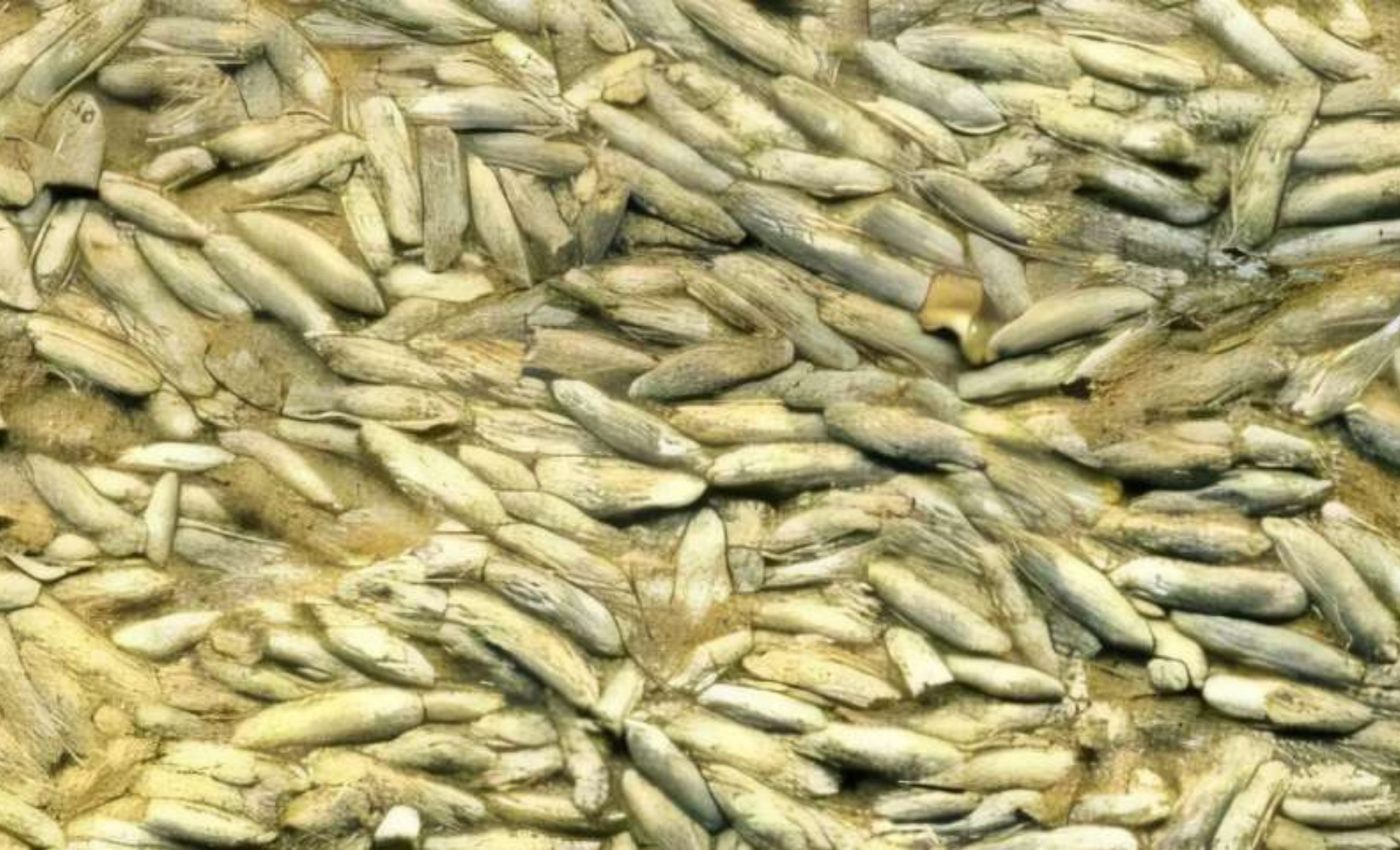
Tiny ocean creatures have always gone extinct during Earth's past climate warming periods
Earth’s oceans keep long, detailed logs of climate change, and some of the best pages come from fusulines – shells smaller than a grain of sand.
A recent study shows that these tiny record‑keepers flourished when the planet cooled yet nearly vanished, twice, when volcanic heat spiked global temperatures.
The work was led by Professor Shuzhong Shen of Nanjing University. The research team stitched together 299 rock sections and 1,391 fossil species to build an unusually sharp picture of past marine life.
Fusulines recorded carbon changes
The stars of the study are foraminifera, single‑celled protists that build carbonate shells. One order, Fusulinida, blanketed the seafloor from 344 million to 252 million years ago and behaved like “carbonate rock factories,” pumping out vast reefs as they grew.
Shen’s data reveal two bursts of diversification, one during late Carboniferous cooling and another as the Permian began.
The first wave produced small, simple shells; the second favored larger forms with honeycomb‑like walls that likely hosted photosynthetic partners.
Fusulines declined in warm spikes
When the climate cooled, glaciers locked up water, sea levels dropped, and new shallow habitats opened. Fusuline species counts tripled during that 40‑million‑year chill, echoing a pattern seen in later planktonic cousins during the Cenozoic cooling trend.
Warm pulses told a different story. The Kasimovian warming about 304 million years ago wiped out roughly 45 percent of fusuline species in less than one million years, and the curve plunged again as temperatures climbed between 294 million and 284 million years ago.
The end‑Permian supervolcano sealed their fate. During that episode, 59.5 percent of remaining species disappeared in a window shorter than the span between human generations today.
Carbon from volcanoes drove extinctions
Shen’s timeline lines up each extinction spike with a pulse of basalt from giant volcanic provinces such as Emeishan and Siberia.
Those eruptions injected carbon dioxide fast enough to heat surface oceans by 5 to 10 °F, acidify seawater, and strip it of oxygen, a triple hit benthic organisms could not dodge.
Carbon‑isotope data show the oceans turned more acidic whenever the 87Sr/86Sr ratio dipped, a fingerprint of fresh volcanic rock weathering.
At the same time, modeled oxygen levels dropped below the threshold needed to support large seafloor life – matching modern observations where foraminiferal diversity declines sharply in low-oxygen zones
Orbital cycles mattered less
Beyond the headline crashes, Shen’s team spotted weak but persistent Milankovitch cycles, grand wobbles in Earth’s orbit that last around two million and one million years.
During the minima of those cycles, gentler seasons may have favored glacier growth and nutrient runoff, nudging speciation upward.
The cycles explain no more than ten percent of the diversity curve, yet their fingerprint is clear enough to remind us that even slow orbital nudges modulate life.
Still, the sharpest rises and falls match rapid volcanic events, confirming that climate severity, not orbital pacing, set the main tempo.
Carbon rise threatens ocean life again
“Mitigating climate change and protecting ecosystems is an urgent task of our time,” emphasized Professor Shen. The study’s most sobering line compares rates of ancient warming with today’s rates.
Current human‑driven warming runs at least ten times faster than the pace that eliminated fusulines, and modern reef‑building calcifiers already show stress in warmer, more acidic seas.
If past is prologue, sustained greenhouse gas emissions could push today’s carbonate shell builders, corals, coccolithophores, large benthic foraminifera, toward the same cliff.
Carbon-linked extinction cycles
To reach sub‑45,000‑year resolution, the team fed every first‑ and last‑appearance datum into a constrained‑optimization algorithm called CONOP.
Supercomputers iterated millions of possible stratigraphic orders until the tightest fit emerged, turning scattered field data into a single high‑definition timeline.
Rarefaction tests showed that sampling gaps do not skew the pattern; three different resample sizes reproduced the same peaks and troughs.
By filtering out trends longer than ten million years, the researchers isolated the shorter cycles that hint at orbital pacing.
The rise and fall of fusulines
The experts then ran multivariate regressions against seven environmental proxies, from carbon isotopes to sea‑level curves.
The best model, which combines carbon dioxide, seawater strontium, oxygen availability, and carbon isotopes, explains 81 percent of the diversity swings, leaving little doubt that physical climate set the rules of life and death for fusulines.
Fusulines vanished, but their story still speaks. They show that rapid warming can silence even dominant, resilient lineages, and they underline how cooling phases can seed explosive innovation.
Marine ecosystems today sit at a similar junction, with greenhouse gases climbing and volcanic analogs replaced by smokestacks and exhaust pipes.
The fossil record offers no comfort that life can adapt at the speed we are forcing, but it does offer a clear warning.
The study is published in the journal Science Advances.
—–
Like what you read? Subscribe to our newsletter for engaging articles, exclusive content, and the latest updates.
Check us out on EarthSnap, a free app brought to you by Eric Ralls and Earth.com.
—–













